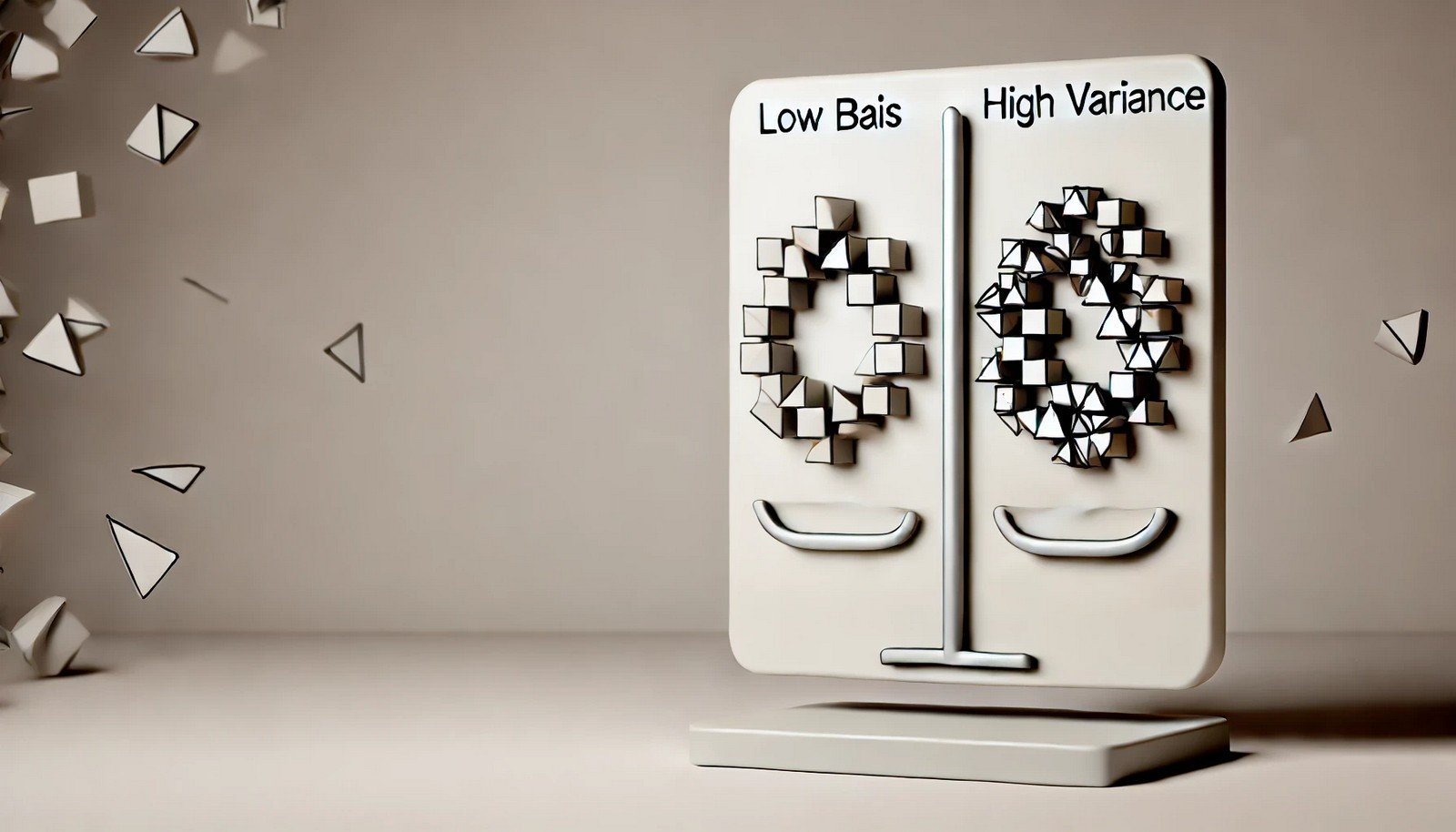Bias-Variance Tradeoff

Quick Navigation:
- Bias-Variance Tradeoff Definition
- Bias-Variance Tradeoff Explained Easy
- Bias-Variance Tradeoff Origin
- Bias-Variance Tradeoff Etymology
- Bias-Variance Tradeoff Usage Trends
- Bias-Variance Tradeoff Usage
- Bias-Variance Tradeoff Examples in Context
- Bias-Variance Tradeoff FAQ
- Bias-Variance Tradeoff Related Words
Bias-Variance Tradeoff Definition
The Bias-Variance Tradeoff is a key concept in machine learning that addresses the balance between a model's ability to generalize and its accuracy. Bias refers to errors due to oversimplification, where the model fails to capture the data's underlying patterns, leading to underfitting. Variance refers to errors from a model’s excessive complexity, capturing noise along with the patterns, resulting in overfitting. The Bias-Variance Tradeoff aims to optimize model complexity for better performance, minimizing both bias and variance errors for accurate predictions.
Bias-Variance Tradeoff Explained Easy
Imagine you're learning to draw by copying pictures. If you simplify too much, your drawing won't look like the original (bias). If you focus on every tiny detail, it might look messy and overly complicated (variance). The Bias-Variance Tradeoff is like finding a balance so your drawing looks close to the original but without unnecessary details.
Bias-Variance Tradeoff Origin
The concept emerged from statistical learning theory in the 20th century, with the aim to enhance predictive accuracy in models by optimizing the tradeoff between errors from simplicity (bias) and complexity (variance).
Bias-Variance Tradeoff Etymology
The term combines "bias," meaning systematic error, and "variance," indicating the spread of predictions, reflecting the balance needed between the two.
Bias-Variance Tradeoff Usage Trends
With the growth of machine learning applications, especially in fields requiring precise prediction like finance and healthcare, the Bias-Variance Tradeoff has become crucial. Its importance is emphasized in choosing models for accuracy and generalization, ensuring minimal errors across diverse datasets.
Bias-Variance Tradeoff Usage
- Formal/Technical Tagging:
- Statistical Learning Theory
- Predictive Modeling
- Machine Learning - Typical Collocations:
- "minimizing bias-variance tradeoff"
- "balancing bias and variance"
- "tradeoff in model complexity"
Bias-Variance Tradeoff Examples in Context
- In predicting house prices, a model with low bias but high variance might predict values accurately for the training set but poorly for new data.
- In speech recognition, achieving a balance in the Bias-Variance Tradeoff ensures the model generalizes well across different accents and pronunciations.
- Recommender systems optimize this tradeoff to recommend relevant items without overfitting to a user’s past preferences.
Bias-Variance Tradeoff FAQ
- What is the Bias-Variance Tradeoff?
It’s the balance between model simplicity (bias) and complexity (variance) to minimize prediction errors. - Why is the Bias-Variance Tradeoff important?
It ensures models are accurate and generalize well, avoiding underfitting and overfitting. - How does high bias affect a model?
High bias leads to underfitting, where the model misses essential data patterns. - How does high variance affect a model?
High variance causes overfitting, where the model captures noise, reducing accuracy on new data. - How is the Bias-Variance Tradeoff managed?
Through cross-validation and regularization techniques, models can be adjusted to minimize both errors. - Is the Bias-Variance Tradeoff unique to machine learning?
No, it’s also found in statistical models and general data analysis for balancing accuracy and complexity. - What are some techniques to reduce bias?
Increasing model complexity, adding features, and more advanced algorithms help reduce bias. - How can variance be minimized?
Simplifying models, reducing features, and applying regularization can reduce variance. - Can we achieve zero bias and variance?
No, an optimal tradeoff is sought to balance them, as minimizing one often increases the other. - Where is the Bias-Variance Tradeoff applied?
In fields requiring accurate predictions like finance, healthcare, and image recognition.
Bias-Variance Tradeoff Related Words
- Categories/Topics:
- Statistical Learning
- Model Complexity
- Generalization
Did you know?
The Bias-Variance Tradeoff plays a critical role in self-driving cars’ decision-making algorithms. Engineers tune models to balance accuracy and error tolerance, enabling the cars to make reliable predictions on diverse road conditions and reduce safety risks.
PicDictionary.com is an online dictionary in pictures. If you have questions or suggestions, please reach out to us on WhatsApp or Twitter.Authors | Arjun Vishnu | @ArjunAndVishnu

I am Vishnu. I like AI, Linux, Single Board Computers, and Cloud Computing. I create the web & video content, and I also write for popular websites.
My younger brother, Arjun handles image & video editing. Together, we run a YouTube Channel that's focused on reviewing gadgets and explaining technology.



Comments powered by CComment